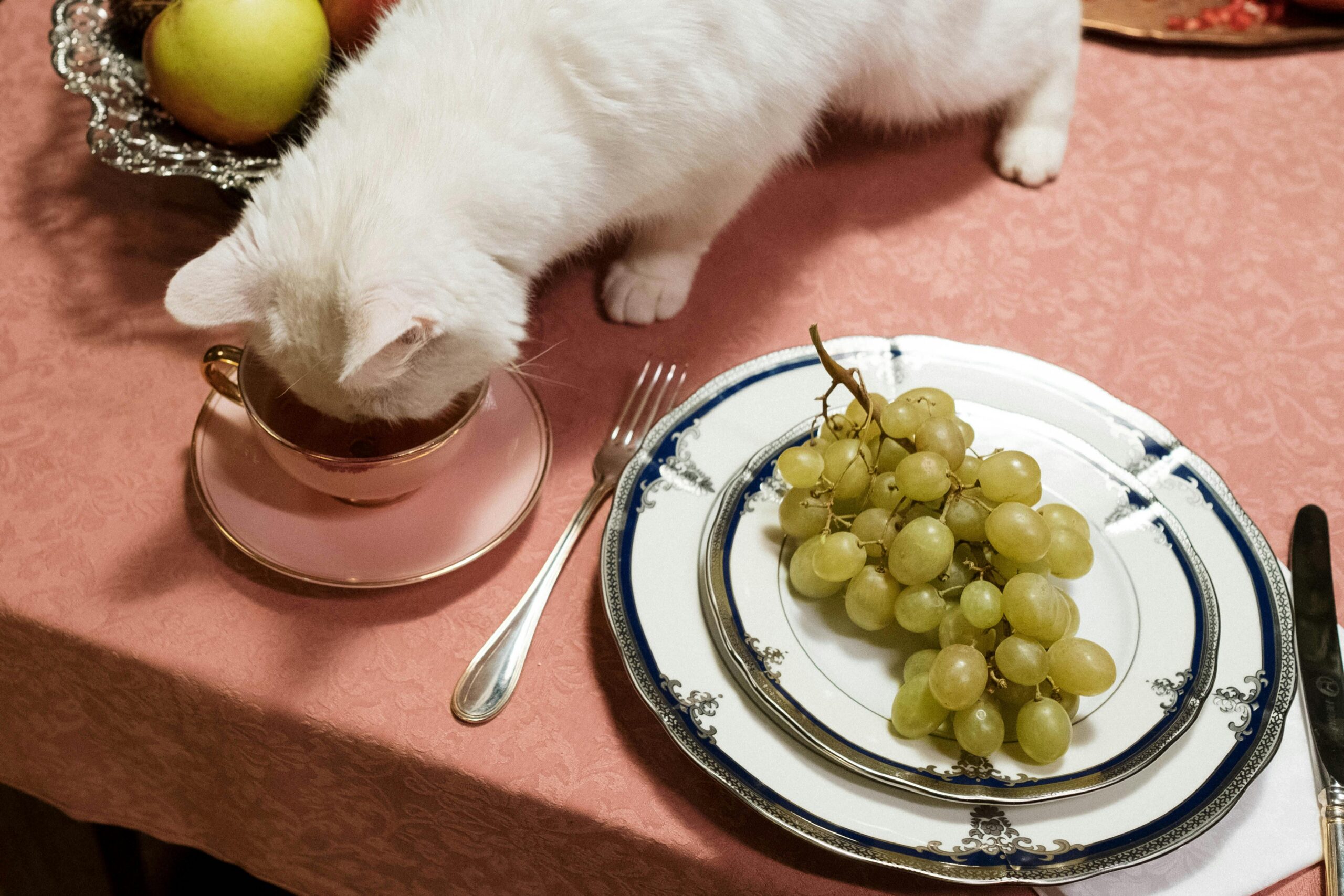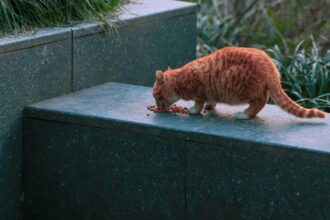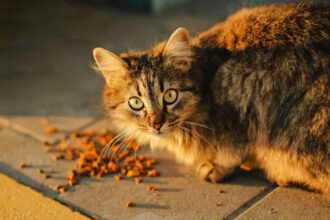When it comes to feeding your cat, it’s essential to choose the best food to support their health and well-being. But with so many options available — dry food, wet food, raw food, canned food, and even prescription food — how can you be sure that you’re making the right choice? Understanding cat food labels can be tricky, especially when there’s a long list of ingredients that you might not even recognise.
Just like human food labels, cat food labels are filled with information designed to inform and guide pet owners, but not all ingredients are created equal. Some may be beneficial, while others might raise red flags. In this article, we’ll help you understand what to look out for when reading cat food labels, so you can avoid potentially harmful ingredients and make the best choices for your cat’s health.
Key Ingredients to Look for in Cat Food
Before diving into the ingredients you should avoid, it’s helpful to know which ingredients are good for your cat. A high-quality cat food should include:
- Meat-based food: Cats are obligate carnivores, which means their diet should primarily consist of meat. Look for high-quality animal proteins, such as chicken, turkey, salmon, or beef. These are essential for muscle development and overall health.
- Omega-3 fatty acids: These beneficial fats support your cat’s coat, skin, and overall immune health. Omega-3s come from fish oil, flaxseed, or algae-based oils.
- High-protein food: Protein is crucial for maintaining muscle mass and energy levels. Quality protein sources include real meats, poultry, or fish.
- Fiber-rich food: A balanced amount of fiber helps maintain digestive health. Ingredients like pumpkin, sweet potatoes, or pea fiber are great sources of fiber for cats.
Now that we know what’s beneficial, let’s take a look at the ingredients you should steer clear of when shopping for cat food.
Ingredients to Avoid in Cat Food
- By-products
By-products are the parts of an animal that are not typically consumed by humans, such as organs, feet, feathers, or beaks. While some by-products can be nutritious, such as organ meats, others can be low-quality and less nutritious. When looking at cat food labels, avoid foods that simply list “by-products” as an ingredient. Look for specific animal parts like chicken liver or beef heart instead. - Corn, Wheat, and Soy
Grains like corn, wheat, and soy are often used as cheap fillers in cat food. These ingredients provide little nutritional value to cats, who are obligate carnivores. While some cats may tolerate small amounts of grains, others may experience food allergies, food sensitivities, or even grain allergies. If your cat has a sensitive stomach or food intolerance, it’s best to opt for grain-free food or organic food that uses higher-quality ingredients like sweet potatoes or brown rice. - Artificial Colors, Flavors, and Preservatives
Artificial ingredients, such as Red 40, Yellow 5, or Blue 1, are often added to make cat food look more appealing to pet owners, but they offer no nutritional benefits to cats. Artificial flavors and preservatives like BHA or BHT may also be included to enhance taste and shelf life, but these can have negative long-term effects on your cat’s health. Always look for natural preservatives such as vitamin E (mixed tocopherols) or vitamin C instead. - Excessive Carbohydrates
While cats may tolerate small amounts of carbohydrates, they don’t require them in their diet. Foods that are high in carbohydrates can lead to weight gain or even obesity in cats, especially if the food is rich in kibble or dry food. If you’re feeding your cat dry food, make sure it doesn’t contain an excessive amount of corn, rice, or other high-carb fillers. Instead, look for high-protein food options that use meat as the first ingredient, followed by small amounts of carbohydrates for balance. - Rendered Fat
Rendered fat is often used in cheaper cat foods as a flavor enhancer. This fat is often made from animal tissues that have been processed and broken down. While fat is an essential nutrient, rendered fat may not provide the high-quality nutrients that your cat needs. Instead, look for animal fats or oils that are derived directly from chicken, salmon, or beef, which are more natural and nutritious for your pet. - Meat Meal
Meat meal is another controversial ingredient. While it sounds like a good protein source, it can be derived from low-quality animal parts, and it often includes unspecified meats, which may not meet your cat’s nutritional needs. Meat-based food should clearly list the specific animal source (e.g., chicken meal or turkey meal), rather than just saying “meat meal” or “animal meal.” - Sugar and Sweeteners
Some cat foods contain sugar or artificial sweeteners to enhance the taste, but these are unnecessary and unhealthy for cats. Sugar can contribute to obesity and diabetes, while some artificial sweeteners like xylitol are highly toxic to cats. Avoid any food that lists sugar or artificial sweeteners as ingredients. - Synthetic Vitamins and Minerals
While vitamins and minerals are essential for your cat’s health, some lower-quality foods use synthetic versions that may not be as easily absorbed by your cat’s body. Look for natural sources of nutrients, like fish oil or organ meats, instead of synthetics. Probiotics and minerals such as calcium, phosphorus, and magnesium should be present in well-balanced proportions to support digestion and overall health. - Vegan Food
Although the idea of vegan food for cats may seem appealing to some pet owners, it’s important to remember that cats are obligate carnivores. This means they rely on animal-based proteins to thrive. Vegan diets can be deficient in essential amino acids, omega-3 fatty acids, and vitamins like B12, which cats need to stay healthy. While there are some commercially available vegan food options, it’s best to avoid them unless advised by a veterinarian with experience in specialized diets.
Special Considerations for Cats with Food Sensitivities
If your cat has a sensitive stomach or suffers from food allergies, it’s especially important to read food labels carefully. For example, if your cat has a meat allergy or fish allergy, you’ll want to avoid foods that contain those proteins. Likewise, if your cat has food intolerance to specific grains or artificial additives, avoid foods with those ingredients.
Additionally, kitten food will have different nutritional requirements compared to senior food or weight loss food, so be sure to choose food based on your cat’s age and health needs.
Conclusion: Make Informed Choices for Your Cat’s Health
Understanding cat food labels is essential for providing your cat with a healthy, balanced diet. By avoiding low-quality fillers like corn and soy, artificial additives, and other questionable ingredients, you can ensure your cat gets the nutrients they need without harmful extras. Look for high-protein food, meat-based food, and foods rich in Omega-3 to support your cat’s overall health and well-being. If your cat has any special dietary needs or sensitivities, consult your vet to find the best food options tailored to their requirements.
Making informed decisions about what goes into your cat’s food can lead to a happier, healthier life for your feline friend.







